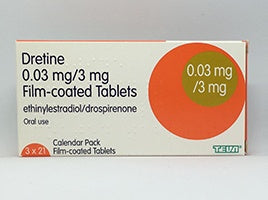What do your Clearblue Pregnancy Test Results Mean?


Related products
What is a Clearblue Pregnancy Test ?
When it comes to determining the earliest signs of pregnancy, many turn to trusted brands like Clearblue. Understanding the results of a Clearblue pregnancy test is crucial for interpreting your pregnancy status accurately. Clearblue offers a range of tests, each designed to detect the presence of the pregnancy hormone, human Chorionic Gonadotrophin (hCG), in your urine. The presence of hCG typically indicates pregnancy, as this hormone is produced shortly after a fertilised egg attaches to the uterine lining.
As a part of our baby and child healthcare products, WELZO offers a variety of Clearblue pregnancy tests to suit your needs, from early detection to digital tests with weeks indicators. Understanding your results is empowering, and we hope this guide has provided clarity.
These tests are a widely-used home diagnostic tool designed to determine if a woman is pregnant and is known for its ease of use, quick results, and high accuracy rates when used correctly.
Types of Clearblue Pregnancy Tests
WELZO offers a variety of Clearblue pregnancy tests, each with unique features. Knowing which test you've used is the first step to understanding your result. Generally, they fall into two main categories:
- Digital Pregnancy Tests.
- Visual (line) tests.
1. Clearblue Digital Pregnancy Tests
The Clearblue® Digital Pregnancy Test with Smart Countdown is the only test that reassures you that the test is working and when the answer is coming. Only Clearblue® has an unique progress indicator that counts down to the result and gives you confidence every step of the way until your result is digitally displayed in words. The extra wide tip makes it easy to use and the unique Floodguard™ Technology inside helps keep excess urine from entering the device and causing test errors. The test also features a hygienic cap. Digital Pregnancy Test with Smart Countdown gives you reassurance while you wait for your result and an accurate digital reading even in early pregnancy. These tests provide a clear textual result, eliminating the guesswork of interpreting lines.
The Standard Digital Pregnancy Test
The Clearblue Digital Ultra Early Pregnancy Test is known for its high accuracy. It is over 99% accurate from the day of your expected period and can tell you 6 days sooner than your missed period. 78% of pregnancies can be detected 6 days before your missed period, 93% of pregnancies 5 days before and 99% or more from 4 days before your missed period.

Using the SmartGuard™ technology, this test stick has an extra wide tip with a unique stop light to tell you when you have sampled enough urine. The Smart Countdown helps give you clear results usually within 3 minutes, displaying this as "Pregnant" or "Not Pregnant."
Clearblue Digital Pregnancy Test with Weeks Indicator:
The Clearblue Pregnancy Test with Weeks Indicator is the first and only test that is as accurate as an ultrasound scan at dating pregnancy. Its Smart Dual Sensor™ not only tells you in words if you're 'Pregnant' or 'Not Pregnant', it also tells you how far along you are.

Amazing right ! And did you know ? The Weeks Indicator is stated by Clearblue to be 93% accurate when using first morning urine and that too within 3minutes. If the result is 'Pregnant' the test will also indicate time since conception occurred (1-2, 2-3 or 3+ weeks).
Not sure how far along are you ? Try our test and find out now with our Clearblue Pregnancy Test with Weeks Indicator.
2. Clearblue Visual Pregnancy Tests
These tests use lines or symbols to indicate pregnancy.
Clearblue Early Detection Pregnancy Test
Our Clearblue Early Detection Pregnancy Test is designed to detect pregnancy several days before a missed period. Results typically show one line for not pregnant and two lines for pregnant.

Clearblue features an ergonomic design, including a longer, curved stick, and wide colour-changing tip. Our unique FloodguardTM Technology, which helps reduce the No.1 reported cause of user error and makes testing easier.
Not sure what to expect and nervous about pregnancy ? Try our Clearblue Early Detection Pregnancy Test.
Clearblue Rapid Detection Pregnancy Test
This revolutionary design came after extensive research, bagging it a Red Dot design award in 2012. It is designed to offer the easiest experience while giving you results as fast as 1 minute, on the day of your missed period.

The wide colour change tip helps make sampling easier and changes colour from white to pink to let you know you've sampled correctly. The results are as simple to understand as well displaying a '+' for positive results (pregnant) and '-' for negative results (not pregnant, or hCG is not yet detectable.). Buy Clearblue Pregnancy Rapid Detection Test Pack of 2 here.
While we know this is a huge moment for you, find a Clearblue Pregnancy Test Combo pack of 2 - equipping you with both, a digital and a visual pregnancy test, for double confirmation.

Understanding Faint Lines
A very common query! If you see a second line (on a two-line test) or the line forming a plus sign, even if it's faint, it still means you are pregnant. A faint line usually indicates that the hCG hormone level is low, which can happen if you're testing very early in your pregnancy.
If you've used an early test and see a faint line, you might want to confirm with another test in a few days or when your period is due. You can find a selection of tests in our Women's Health Tests collection.
How do you Prepare for the Test?
Before using a Clearblue pregnancy test, it is imperative to read the instructions meticulously. Instructions are not just formalities; they are the blueprint for accurate results. A structured approach to conducting the Clearblue pregnancy test is necessary for precise results. Begin by checking the test's expiry date and ensuring all components are present. Follow the step-by-step guide included in the test package—this typically involves immersing the test tip in urine for a specified time, laying the test flat, and waiting for a set duration before reading the result.
Factors Affecting Test Accuracy
Understanding your Clearblue pregnancy test results goes beyond the mere reading of lines or digital messages. A myriad of factors potentially influences the accuracy and reliability of your test results, making it paramount to consider each element carefully.
1. Timing
The timing of when you take a pregnancy test is a significant determinant in the validity of its results. Dr. Emily Roberts, a seasoned gynaecologist, advises, "The best time to take a pregnancy test is one week after you have missed your period." This timing ensures that if you are pregnant, your body has had enough time to produce a detectable level of the pregnancy hormone hCG.
Testing too early, even with high-sensitivity Clearblue tests, can lead to false negatives. This is because the hCG may not have risen to a detectable level. Conversely, waiting too long, especially in cases of ectopic pregnancy, could pose health risks. Dr. Roberts emphasises that "while early detection is beneficial, accuracy is crucial, and patience in testing can pay dividends in reliability."
2. Urine Concentration
Using the first urine of the day can increase test accuracy, especially when testing early, as it contains the highest concentration of hCG.
3. Medications or Medical Conditions
The presence of certain medications or medical conditions can also sway the results of a pregnancy test. Dr. Roberts elaborates, "Fertility medications containing hCG can lead to false positives, while conditions such as polycystic ovary syndrome can sometimes cause false negatives due to hormonal imbalances."
It is also worth noting that the rarity of hCG-producing tumours and other medical conditions like kidney disease can cause misleading test results. Understanding these nuances is essential, and Dr. Roberts suggests discussing your medical history and medication use with a healthcare provider before taking a test to better interpret the results.
4. Proper Storage and Use of the Pregnancy Test Kit
The integrity of the Clearblue pregnancy test can be compromised by how the test is stored and used. According to the manufacturer's guidelines, pregnancy tests should be stored in a cool, dry place, and exposure to extreme temperatures can render the test ineffective.
The use of a test after its expiry date is another common mistake that can lead to unclear or inaccurate results. Dr. Jonathan Harris, a pharmacist, states, "Always check the expiration date on the pregnancy test package. Chemical reagents in the test can degrade over time, which is why an expired test can fail to produce accurate results."
You Have Your Clearblue Result – What Next?
> If Your Clearblue Test is "Pregnant"
Congratulations! The next step is usually to make an appointment with your GP or a midwife to confirm the pregnancy and start your antenatal care. Dr. Roberts notes, "A positive test should be followed up with a professional confirmation, typically through a blood test and possibly an ultrasound."
Follow-up tests are an essential part of confirming a pregnancy. Blood tests can quantify the exact amount of hCG in the bloodstream, and ultrasounds can verify the location and viability of a pregnancy. According to Dr. Roberts, "Follow-up tests are the gold standard for pregnancy confirmation and play a vital role in early prenatal care." Dr. Roberts emphasises, "Early prenatal care is vital for monitoring the health of the mother and the developing baby, and for anticipating any potential issues."
The emotional and psychological impact of pregnancy test results cannot be understated. A positive result can bring joy, anxiety, or a mixture of both, while a negative result can be a source of relief or sadness, depending on an individual's circumstances. It's important to acknowledge these feelings as valid. Dr. Lisa Hamilton, a clinical psychologist, suggests, "Taking time to process your emotions and practising self-care is key, regardless of the outcome of the test."
The support of partners, family, or professional counsellors can be invaluable following the results of a pregnancy test. Dr. Hamilton advises, "Do not underestimate the power of support systems during such transformative moments in life. They can provide emotional stability and clarity for future decisions."
For more guidance on early pregnancy, browse our pregnancy blog section or explore our pregnancy vitamins and supplements products to support your health.
> If your Clearblue Test is "Not Pregnant"
For those who receive a negative result and are looking to conceive, considering family planning options becomes the next step. Dr. Roberts advises, "Consult with a fertility specialist if you face challenges in becoming pregnant. There are numerous resources and treatments available that can assist in family planning."

If you were hoping for a different result and are trying to conceive, remember that timing is key. You can find resources and products to support your conception journey in our conceive collection.
If you are not trying to conceive, this might be a good time to review your contraception options.
If your period is late and you're concerned, it's always best to consult a healthcare professional.
If you have had unprotected sex and are concerned about your sexual health, consider our confidential sexual health tests.
Common Questions About Clearblue Test Results
1. How Accurate Are Clearblue Pregnancy Tests ?
Clearblue tests are over 99% accurate at detecting pregnancy from the day you expect your period when used according to instructions. Accuracy for early detection tests will be lower in the very early days before a missed period, as hCG levels vary.
2. What if My Clearblue Test Shows an Error (e.g., Book Symbol, Blank Screen)?
- Digital Tests: May show a "book symbol" (refer to leaflet error) or a blank screen.
- Visual Tests: The control line may not appear.
This usually means a testing error (e.g., too much or too little urine, test not laid flat, absorbent tip pointed upwards). You will need to re-test with a new test, carefully following the instructions.
3. What if My Result is Unexpected or Confusing?
If you get a "Not Pregnant" result but still suspect you might be pregnant (e.g., missed period), wait a few days and test again, preferably with first morning urine. If your period is significantly late and tests are still negative, consult your GP.
If you previously tested "Pregnant" but a later test shows "Not Pregnant" or your period starts, it could indicate a very early pregnancy loss, which is common. It's advisable to speak to a doctor if you have concerns.
Correct interpretation of your Clearblue pregnancy test results is not merely a technicality; it can be a life-changing moment. While home pregnancy tests like Clearblue offer a high degree of accuracy, they are not infallible. It is essential to understand the variables that can affect test results, the importance of confirming results with a healthcare provider, and the necessity of addressing the emotional and psychological impacts. Whether the test reads positive or negative, follow-up with a medical professional is imperative to ensure health and well-being. This article has traversed the various aspects of understanding Clearblue pregnancy test results, yet each journey is unique, and further questions should be discussed with healthcare providers who can offer personalised advice and support.


















 Rated Excellent by 26,523+ Reviews
Rated Excellent by 26,523+ Reviews